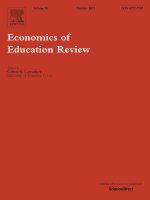ECONOMICS OF EDUCATION REVIEW
Publicado:
Clasificación JEL:
I24, R12, I21

Lo más reciente
Pronosticando inflaciones de canastas de alimentos desagregadas en Colombia usando un modelo XGBoost
Cesar Anzola-Bravo, Poveda-Olarte Paola
Gaurav Khanna, Carlos Alberto Medina-Durango, Anant Nyshadham, Daniel Ramos-Menchelli, Jorge Andrés Tamayo-Castaño, Audrey Tiew
Rural schools are usually behind in terms of learning, and this could be partly related to geographical isolation. We explore this hypothesis, assessing the causal effect of the distance between schools, towns, and State capitals on elementary school test scores. We use granular administrative records from Colombia and estimate spatial regression discontinuity models. Results indicate that the distance to both towns and State capitals negatively affect students test scores. The differences in educational inputs, such as teachers education attainment and contract stability, partly explain these gaps. A program providing monetary incentives to teachers in difficult access areas fails to attenuate the isolation effect.
